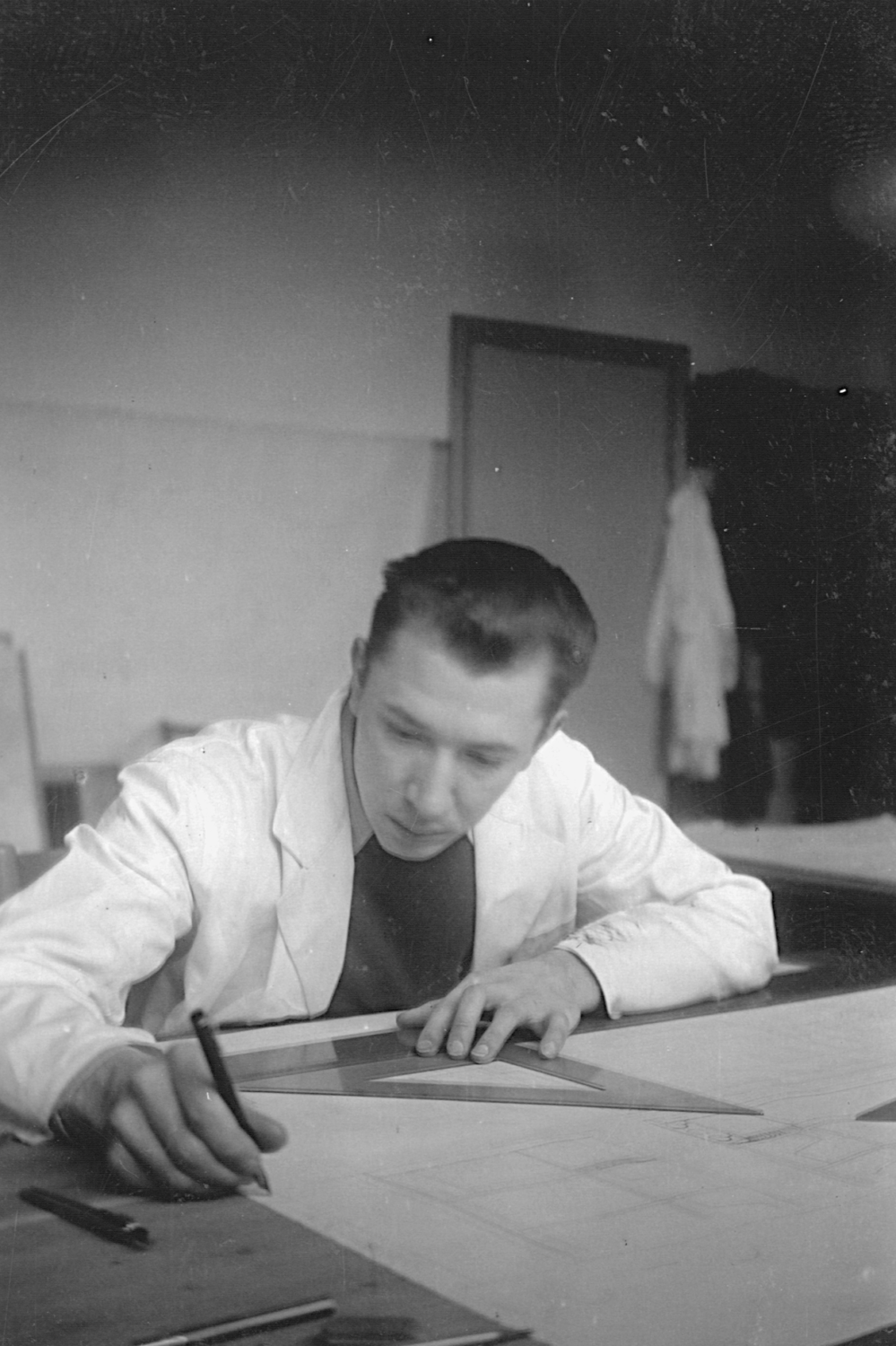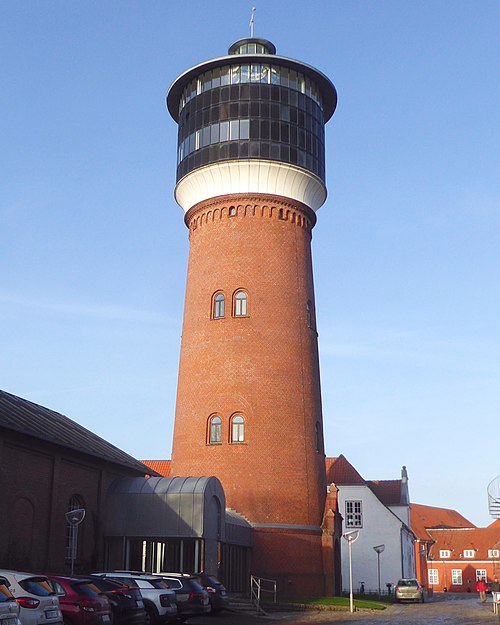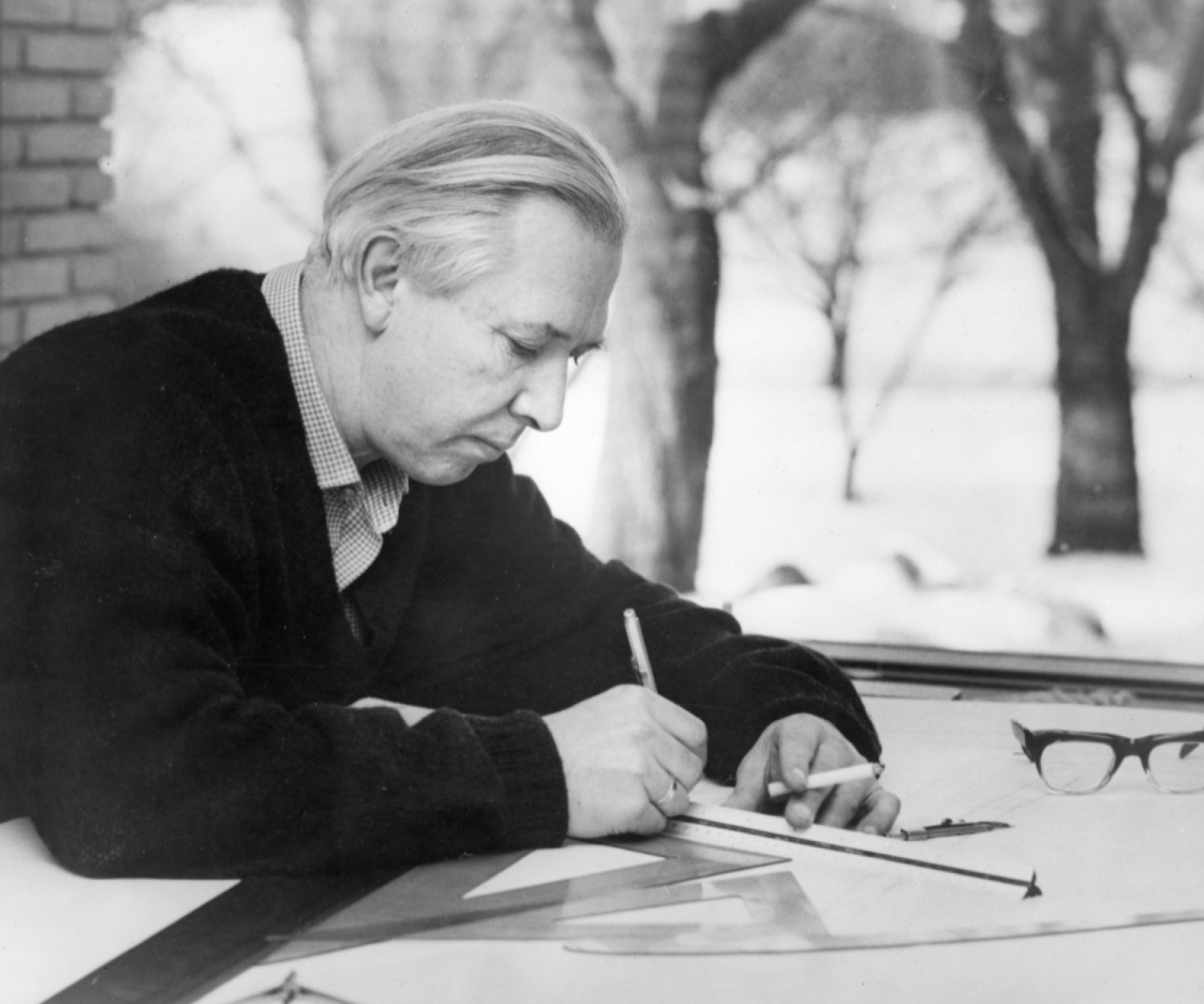Thirty-seven chairs are on display in a former water tower in the town of Tønder, all designed by Hans J. Wegner. Beautiful, sculptural, iconic, they wind their way up the tower’s floors. Wegner called them his ‘37 best chairs’ and donated them to his native town in 1995.
Thirty-seven chairs. It would be a dream for any designer to contribute so many strokes of genius, but they are merely a fraction of his legacy. Wegner was not called the ‘master of the chair’ for nothing: he designed more than 600 chairs during his lifetime. That is part of the reason why Wegner is now getting his own dedicated museum in Tønder. A place to present his catalogue, thoughts, design process, history. He deserves that, says Anne Blond, who is project manager for Museum Wegner and responsible for realizing the museum over the next couple of years. She worked at the Art Museum in Tønder for 17 years, the last three years as head of the arts department of Museum Sønderjylland (Museum South Jutland), where, among other projects, she was in charge of a special exhibition about Wegner. When it opened, in 2014, the museum was virtually overrun. Anne Blond gave almost 100 guided tours, and the museum had a record number of visitors.

However, the water tower and temporary exhibitions are no longer sufficient. ‘Denmark and the international world of design deserve a museum that is dedicated to Wegner. It is no longer enough to assign him a side room in an art exhibition. Denmark has reason to be immensely proud of him, and if we fail to revitalize our design legacy – including Wegner – we run the risk of seeing it wither and die.’

The chair that put Kennedy in his place
Today, Wegner’s designs are represented around the world, from MoMA in New York to Designmuseum Danmark in Copenhagen, but he was born into a far less glamourous world, in Tønder, in 1914. After training as a cabinetmaker here, he moved to Copenhagen in 1936 to attend the School of Arts and Crafts. How did a humble South-Jutlander rise to such iconic status? Anne Blond, who has dedicated much of her working life to Wegner, offers her view:
‘Take the Round chair, for example. A classic. At first glance, it looks a little boring. But once you crack the code, you appreciate the sculptural quality and the sense of lightness in the design; the seat almost floats, and the body of the chair is constructed in such a way that the grain almost flows into one and continues into the legs. As part of the furniture in a room, it does not call attention to itself, but on its own, it looks like a throne.’ ‘The Chair’, as it was dubbed in America, led to Wegner’s major breakthrough in 1950. Today, it is best known from the pivotal televised debate between Kennedy and Nixon ten years later.

And while an international success at this level could easily have made Wegner a multimillionaire, he turned down the offer of production in the United States. He continued his form experiments back home, creating one icon after another, which still shine in home design features to this day. The Peacock Chair, the Papa Bear Chair. The Wishbone Chair has been in uninterrupted production since its debut in 1938.
Why is he still so interesting?
‘His thinking from the 1940s on is incredibly relevant today. Wegner favoured local production and good craftsmanship in a time when furniture production was increasingly industrialized. He believed that the key goal was not necessarily to produce large quantities but instead to make a product that everyone can be proud of. And when a piece is so well-designed it lasts longer and is handed down. That is a perfect match for the UN’s Sustainable Development Goals, with their focus on the role of local communities,’ says Anne Blond. ‘Furthermore, he described his design process as play. Play promotes innovation. That is something they are well aware of at Kolding Design School, among other places, where they have established a master’s programme focused on play as a driver of innovation: Design for Play. If we look at Lego, we are a nation with a keen sense of the importance of good play, which is the basis of good design, and this is a quality that the outside world associates with Denmark.’

Not just about Wegner
Museum Wegner is the name, and the goal is to ensure a central location in Tønder. At this point, that is the one certain aspect of this project, which began in 2020 as an idea launched by ‘Foreningen til etablering af et museum for Hans J. Wegners møbelkunst’ (The Association for the Establishment of a Museum for Hans J. Wegner’s Furniture Design). The association has given itself three years to develop a viable plan for the realization of this goal; if it has not been achieved within this timeframe, the association will be dissolved. That is quite a task, but Project Manager Anne Blond is optimistic. For example, Wegner’s two daughters have stepped up as co-sponsors and have promised to provide full access to their father’s archive. So far, so good. How do you envision the actual museum? ‘I’m hoping for a building that will feel homely to the locals but which can also attract an international audience. Marianne and Eva Wegner have promised to make their knowledge, collection and archive available to the association and, later, to the museum.’ And even though Wegner is the ultimate principal, his story also acts as a springboard for a larger story.
‘We aim to establish an institution that revitalizes the story of Danish design but markets it based on the body of work of an outstanding individual designer. Denmark generally lacks development platforms for craft makers and designers, and it is part of the ambition to place Wegner’s body of work into wider design, technology and arts contexts through temporary exhibitions.’ she explains. ‘In Denmark, we only have a vague understanding of ourselves as a design nation, but we have been pioneers in creating a really well-functioning society, not least thanks to the talented designers who helped build it. By telling Wegner’s story, we can tell stories about past, present and future society and about aesthetic-technological ideas. Can Wegner’s designs and thinking promote the development of our future society? So, yes, it’s a museum about Wegner, but it should have broader societal relevance for today and for tomorrow. ’The museum will – hopefully – be ready to open in a few years’ time. Until then, 37 beautiful chairs are on display in a water tower in Tønder. Anne Blond is looking forward to seeing Wegner’s chair exhibition supplemented with a presentation with a broader scope. ‘When Wegner donated the chairs, it was quite unusual to see 37 chairs by a single designer exhibited together in a single venue. That offered a new perspective on design. Today, I see the water tower as an appetizer leading up to the coming museum. Wegner’s contribution went far beyond chair design – and now, we’re finally ready to tell the full story.’
Anne Blond

Anne Blond, 45 år
Mag. art. in Art Historyfrom Aarhus University in 2005 og has a master i design from 2011.
Committee leader for Statens Kunstfonds project support committee for Arts and Crafts 2018-2021.
Worked at the Art Museum in Tønder for 17 years . For the last three years, she served as unit manager for art in Museum Sønderjylland, which is a merger of seven South Jutland museums.
In 2020 she became project manager in the ‘Association for the establishment of a museum for Hans J. Wegner’s furniture’ and is responsible for getting a future Museum Wegner from dream to reality.

